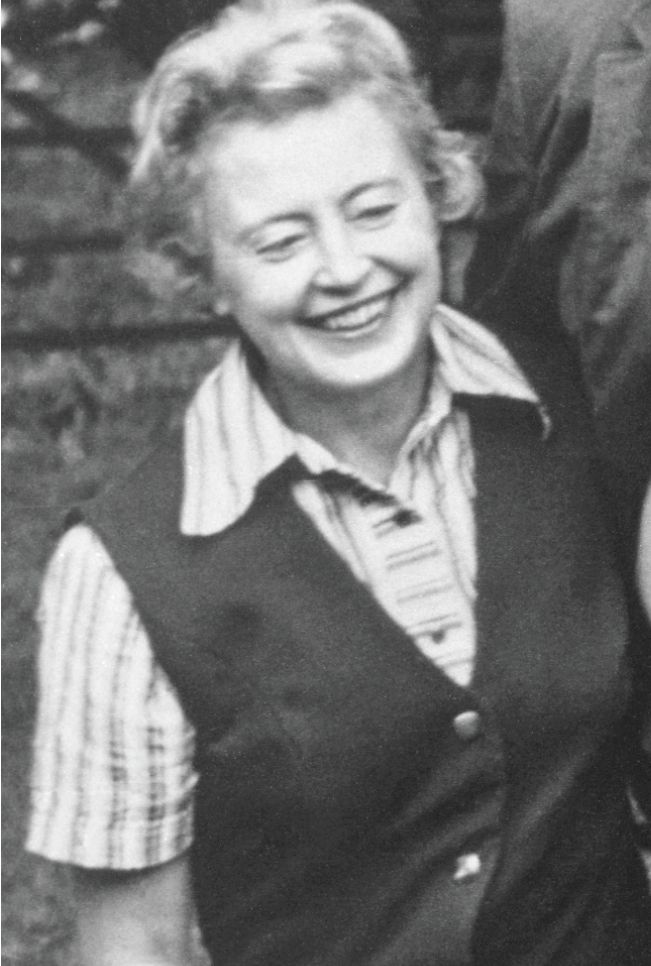Eleanor Margaret Burbidge
DOI: 10.1063/PT.3.4575
Elegant, wise, fair, knowledgeable, original, and fiercely determined, Eleanor Margaret Burbidge was one of the great observational astronomers of the past century. One of us (Ostriker) had the privilege of studying under her in the early 1960s at Yerkes Observatory in Wisconsin.

Eleanor Margaret Burbidge
AIP ESVA/CLAYTON COLLECTION

Scientifically, Margaret is best recognized for her lead role in the 1957 paper conclusively arguing that “we are all stardust”—specifically, that most of the heavier chemical elements were made in various phases of stellar evolution. Written by Margaret, husband Geoffrey Burbidge, William Fowler, and Fred Hoyle, the paper laid out the various processes, including both slow and rapid neutron capture, by which the familiar chemical elements were built up. Amazingly, the work’s essential arguments remain central to our current understanding of nucleosynthesis. However, the article represents but a small part of Margaret’s many accomplishments.
In the 1950s and 1960s, Margaret obtained optically based rotation curves for numerous local spiral galaxies. The curves were characteristically flat, the velocity not declining with radius—a result also found at radio frequencies by Morton Roberts and later in the optical regime by Vera Rubin. Oddly, in the theoretical interpretation of those results, Geoffrey fit the curves’ outer parts with a Keplerian r−1/2 dependence and made the case for dark-matter halos less obvious—but the results were there for all to see.
In the 1960s Margaret was among the leaders who discovered violent events, including biconical, high-velocity outflowing winds, at the centers of galaxies, which indicated the intense energy input now recognized as active galactic nuclei explosions. Several early papers that Margaret wrote, with Geoffrey, on such observational phenomena were key to late-20th-century revolutionary physical discoveries, including dark matter and black holes. In a 1967 single-author article in Annual Reviews of Astronomy, she summarized her work on quasi-stellar objects (QSOs) and described the observational properties, found by her and other investigators, that led astronomers to deduce that massive, accreting black holes were centrally involved. On the velocity dispersions seen in groups and clusters of galaxies, the Burbidges wrote prescient papers that complemented the work of Fritz Zwicky but did not leap to the conclusion that “dark matter” was involved.
Margaret had a knack for finding the facts that challenged the imagination and the conventional view. She was part of the team that in 1974 discovered the high redshift quasar OQ 172, which for many years set the record for the earliest and most distant QSO. It posed a key and still unsolved puzzle over the physical mechanisms that could have operated at that energy scale and early epoch.
Margaret was born in Davenport, UK, on 12 August 1919. In primary school, she was fascinated with large numbers. As a teenager, she read books by James Jeans, a distant relative, and realized that the distances of the stars were large, like the numbers she relished.
At high school in London, Margaret studied physics and mathematics and decided in 1936 to major in astronomy at University College London (UCL). She studied spectroscopy with Herbert Dingle at Imperial College and did her graduate work at the University of London Observatory on spectroscopy of Be stars. She met Geoffrey in a UCL class in 1947; they married in 1948 and had a daughter in 1956.
The Burbidges stayed at the observatory until summer 1951, when they expanded their observational horizons at Haute-Provence Observatory in France. Later that year, on a two-year visa, Margaret went to Yerkes Observatory, and Geoffrey went to Harvard University before joining her at Yerkes in 1952. Margaret used the 82-inch telescope at McDonald Observatory in Texas for spectroscopy of B and Ap stars. A 1953 conference at Yerkes on the origin of elements inspired her to study element abundances; after her and Geoffrey’s move to Cambridge University, the two collaborated with Hoyle and Fowler on their famous B2FH paper on stellar nucleosynthesis.
They returned to the US in 1955—Geoffrey to Mount Wilson Observatory and Margaret to Caltech because of Mt Wilson’s ban on women observers. They went back to Yerkes in 1957 and collaborated with Kevin Prendergast on the rotation curves of galaxies. That led to their interest in galactic nuclei and quasars. They moved to the University of California, San Diego (UCSD), in 1962 and returned to Cambridge in the summers to work with Hoyle. Margaret continued her research until about 2006.
A leader in raising awareness of gender and other kinds of discrimination in astronomy, Margaret successfully overcame barriers to women’s use of major telescopes and, in her leadership roles, campaigned for gender equality. In 1971 she turned down the Annie Jump Cannon Award from the American Astronomical Society because she felt its restriction to women recipients was discriminatory.
Among her many recognitions, Margaret received the National Medal of Science in 1983. In 1973–75, she was the first, and only, woman director of the Royal Greenwich Observatory, and in 1976–78 she was the first woman president of the American Astronomical Society. From 1979 to 1988, Margaret was the first director of the UCSD Center for Astrophysics and Space Sciences. She died in San Francisco on 5 April 2020.
More about the Authors
Jeremiah Ostriker. Princeton University, Princeton, New Jersey.
Kenneth Freeman. Australian National University, Canberra.
